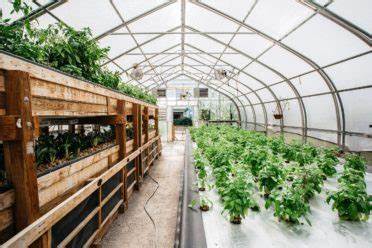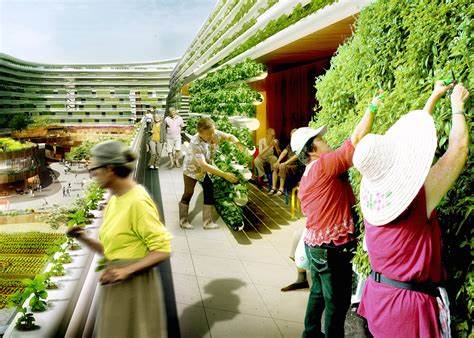
Vertical Farming: Revolutionizing Agriculture through Efficient Design
Introduction
Vertical farming has emerged as a groundbreaking solution to address the challenges of traditional agriculture. This innovative approach involves growing crops in vertically stacked layers, utilizing artificial light and controlled environments. The relevance of vertical farming lies in its potential to revolutionize food production, ensuring sustainability, and meeting the increasing global demand for fresh produce. Additionally, designing vertical farms with careful consideration of key principles and concepts is crucial for their success and long-term viability.
Historical Background
To fully understand the significance of vertical farming, it is essential to delve into its origins and evolution. The concept of growing plants in stacked layers can be traced back to the ancient Hanging Gardens of Babylon. However, modern vertical farming practices began to gain momentum in the early 20th century. Early examples of vertical farming practices, such as the Babcock Tower in Chicago, showcased the early attempts to maximize space utilization and agricultural productivity using vertical structures.
Key Concepts and Definitions
Vertical farming encompasses several key concepts and definitions that are crucial to grasp its essence. At its core, vertical farming involves the cultivation of plants in vertically stacked layers, often utilizing hydroponics, aeroponics, or aquaponics systems. Understanding and implementing these terms is critical for efficient resource utilization within vertical farms. Additionally, optimizing space and resource utilization is a fundamental principle of vertical farming, ensuring maximum productivity and sustainability.
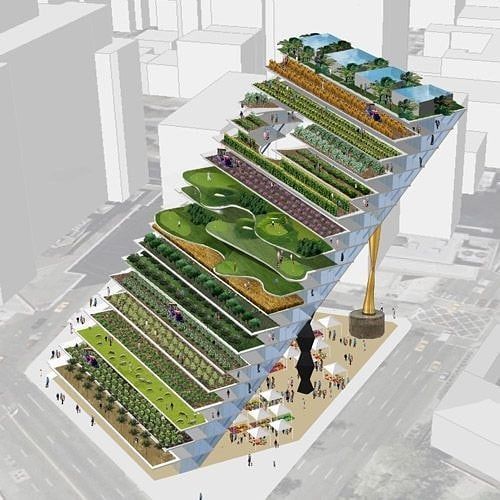
Main Discussion Points
Point: Building Design and Infrastructure
Efficient space utilization and vertical stacking are paramount in vertical farming. Designing structures that allow for maximum plant density and utilization of space is crucial to achieve optimal yields. Additionally, integrating lighting, temperature, and ventilation systems are essential considerations to create favorable growing conditions within vertical farms. Incorporating automation and smart technologies further enhances the efficiency and productivity of the farm.
Point: Water and Nutrient Management
Hydroponic systems, which enable the cultivation of plants without soil, play a vital role in vertical farming. These systems offer advantages such as efficient water usage and controlled nutrient delivery. Implementing strategies for nutrient delivery and recycling ensures sustainable resource utilization within vertical farms. Water conservation and filtration methods must also be considered to minimize waste and maintain a closed-loop system.
Point: Energy Efficiency and Sustainability
Vertical farms must prioritize energy efficiency and sustainability to minimize environmental impact. Utilizing renewable energy sources such as solar panels or wind turbines significantly reduces reliance on traditional energy grids. Incorporating energy-efficient systems for lighting, temperature control, and automation helps minimize energy consumption. Furthermore, employing sustainable materials and construction practices ensures the overall ecological sustainability of vertical farms.
Point: Crop Selection and Optimization
Careful consideration must be given to crop selection in vertical farming. Factors such as growth rate, nutritional value, and market demand influence the choice of crops. Techniques like genetic modification and plant breeding can optimize crop growth and yield, enabling vertical farms to meet the diverse needs of consumers. Ensuring a varied crop selection within vertical farms enhances food security and promotes agricultural biodiversity.
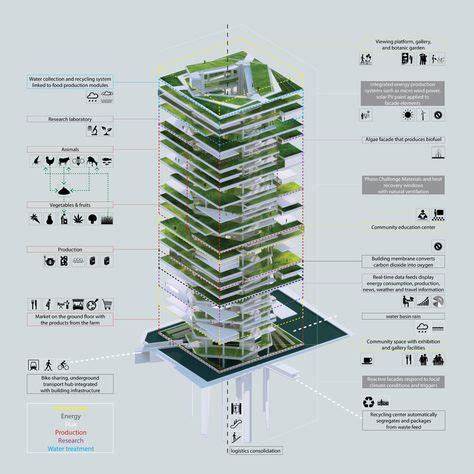
Case Studies or Examples
Example: AeroFarms
AeroFarms exemplifies successful vertical farming design principles. Through the utilization of advanced aeroponic systems and LED lighting, AeroFarms achieves optimal crop growth in a controlled environment. Their innovative design enables year-round production of leafy greens, reducing transportation costs and ensuring fresh produce for local communities.
Example: Sky Greens
Sky Greens showcases effective vertical farming design principles with their patented A-Go-Gro vertical farming system. By utilizing rotating vertical towers, Sky Greens optimizes space utilization and facilitates efficient crop growth. This design innovation has led to increased productivity and reduced water usage, making Sky Greens a leading name in sustainable urban agriculture.
Example: Plantagon
Plantagon stands as a pioneer in the integration of vertical farming into urban environments. Their unique vertical greenhouse design maximizes natural light utilization and minimizes the building’s footprint. Plantagon’s design principles allow for efficient food production while creating green spaces within urban areas, promoting sustainable urban development.
Current Trends or Developments
Ongoing advancements in vertical farming technology continue to shape the industry’s future. Research findings on optimizing design principles contribute to the development of more efficient and productive vertical farming systems. Emerging trends include the integration of vertical farming with urban environments, promoting localized food production and reducing transportation costs.
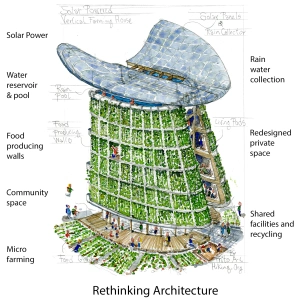
Challenges or Controversies
While vertical farming holds immense potential, challenges and controversies persist. Concerns about the scalability and profitability of vertical farms raise questions about their long-term viability. Controversies surrounding the use of artificial lighting and non-traditional farming methods spark debates about the authenticity and naturalness of vertical farming. Furthermore, differing viewpoints exist regarding the environmental impact and overall sustainability of vertical farming practices.
Future Outlook
The future of vertical farming appears promising, with its growth and expansion expected to continue. Advancements in design principles and technologies will further enhance the efficiency and productivity of vertical farms. The integration of vertical farming into sustainable urban agriculture systems is anticipated to drive the development of self-sufficient cities, ensuring food security and minimizing ecological footprint.
Conclusion
Design principles play a vital role in the success of vertical farming. By optimizing space utilization, managing resources efficiently, and prioritizing sustainability, vertical farms can revolutionize agriculture. As the global population continues to rise, the importance of vertical farming design principles becomes increasingly evident. With careful planning and implementation, vertical farming has the potential to address food security and environmental challenges of the future.




